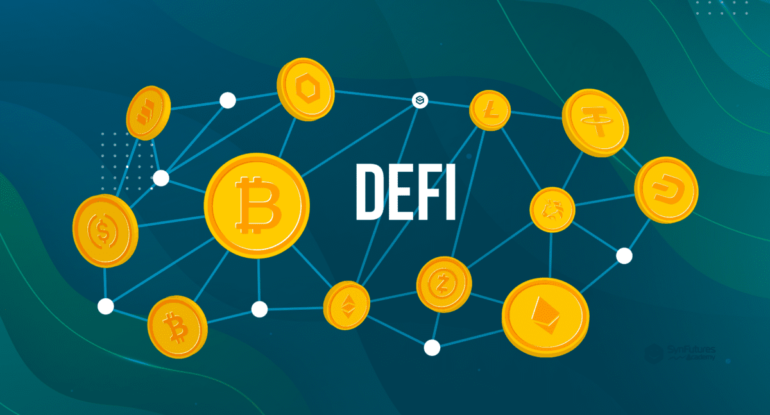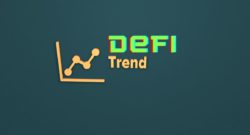Fintech In The Front, DeFi In The Back: Igniting A Crypto Revolution

The convergence of financial technology (fintech) and decentralized finance (DeFi) has the potential to reshape the entire financial landscape, ushering in a crypto revolution that marries traditional financial services with the cutting-edge innovation of blockchain technology. This fusion, with fintech leading from the front and DeFi driving from the back, promises to democratize access to financial services, enhance efficiency, and decentralize control over wealth. In this comprehensive article, we explore how the synergy between fintech and DeFi is poised to ignite a transformative crypto revolution.
The Rise of Fintech: Paving the Way
Fintech has already transformed the financial industry by introducing digital payment solutions, online banking, and investment platforms. It has made financial services more accessible, efficient, and user-friendly. However, the traditional financial system still suffers from limitations like high fees, centralization, and exclusivity. This is where DeFi steps in to revolutionize the back end of fintech operations.
The Power of DeFi: Empowering the Back End
Decentralized Finance (DeFi) leverages blockchain and smart contract technology to recreate traditional financial services in a decentralized manner. From lending and borrowing to decentralized exchanges and yield farming, DeFi protocols eliminate intermediaries and facilitate peer-to-peer transactions, reducing costs and increasing accessibility. While fintech focuses on user experience and front-end services, DeFi operates behind the scenes, automating processes and removing the need for centralized institutions.
Fintech and DeFi: A Symbiotic Relationship
The convergence of fintech and DeFi isn’t just a coincidence; it’s a strategic alignment that capitalizes on the strengths of both domains. This symbiotic relationship creates a powerful combination that propels the crypto revolution forward. Here are ten long-form points that highlight the depth of this symbiotic relationship:
- Financial Inclusion Reimagined: Fintech has made strides in reaching the unbanked and underbanked populations, but DeFi takes this a step further. Its borderless and permissionless nature ensures that anyone with an internet connection can access financial services, regardless of their location or social status.
- Interoperable Solutions: Fintech companies have introduced various standalone solutions. However, DeFi offers a platform for these solutions to interact seamlessly. By integrating DeFi protocols, fintech can create an interconnected ecosystem that enhances the user experience.
- Decentralized Banking: Fintech’s focus on mobile banking and digital wallets aligns perfectly with DeFi’s goal of decentralizing banking services. Users can securely manage their assets through their smartphones while maintaining full control over their private keys.
- Risk Mitigation: Fintech emphasizes risk assessment and management, and DeFi contributes by offering decentralized insurance and derivatives markets. These solutions enable users to protect their investments and hedge against market volatility.
- Fractional Ownership: Fintech has introduced fractional ownership of assets like stocks, but DeFi takes it further by allowing fractional ownership of digital assets, real estate, and more. This democratizes investment opportunities and empowers small investors.
- Cross-Border Transactions: Fintech has streamlined international money transfers, but DeFi’s peer-to-peer platforms eliminate the need for traditional remittance services. This reduces costs and time delays, benefiting both senders and recipients.
- Decentralized Lending and Borrowing: While fintech offers online lending platforms, DeFi introduces decentralized lending protocols. These allow users to borrow and lend without intermediaries, creating a more efficient and open credit market.
- Trust Through Transparency: Fintech has struggled with issues of trust due to centralized control. DeFi addresses this through transparent blockchain ledgers that provide an immutable record of transactions. This transparency builds trust between users and the platform.
- Cross-Platform Integration: Fintech applications can integrate DeFi protocols seamlessly, enabling users to manage their traditional assets alongside their crypto holdings. This integration blurs the lines between traditional and digital finance.
- Financial Education: Fintech has focused on increasing financial literacy, and DeFi can contribute by offering accessible educational resources about blockchain technology, cryptocurrencies, and decentralized finance. This combination empowers users to make informed decisions.
The Crypto Revolution: Fintech and DeFi Leading the Way
The crypto revolution spurred by fintech and DeFi is not a mere trend; it’s a fundamental shift in how financial services are conceived, executed, and experienced. Traditional banking models are being disrupted, giving rise to a more inclusive, efficient, and user-centric financial ecosystem. Individuals are empowered to have full control over their finances, while financial intermediaries face the challenge of adapting or becoming obsolete.
As fintech companies integrate DeFi protocols into their operations, the boundaries between traditional finance and blockchain-powered innovation blur. This convergence paves the way for a new breed of financial services that are not only technologically advanced but also grounded in the principles of decentralization, transparency, and inclusivity.
Embrace the financial revolution with Decentralized Finance (DeFi). 🌐
From reshaping money to leveraging blockchain for inclusivity, DeFi is transforming the game.
Discover how DeFi challenges the old norms and empowers everyone, everywhere.#cryptocurrency #crypto #bitcoin… pic.twitter.com/pseAfqKV3N
— Teeka Tiwari (@Teeka_Tiwari) August 15, 2023
Conclusion: A New Era of Financial Empowerment
The synergy between fintech in the front and DeFi in the back is a recipe for revolution. As these two forces combine, they create a seamless bridge between traditional finance and blockchain technology. Fintech brings user-friendly interfaces and accessibility, while DeFi revolutionizes the backend, providing automation, security, and the removal of intermediaries. Together, they herald a future where financial services are accessible to all, where transactions are swift and secure, and where the power of wealth is decentralized.
The crypto revolution is not about replacing the old with the new; it’s about building upon the foundations of fintech and amplifying their impact through the transformative potential of DeFi. The marriage of these two domains will undoubtedly redefine finance, democratize access, and usher in an era where financial empowerment is no longer a luxury but a right for all.






























































